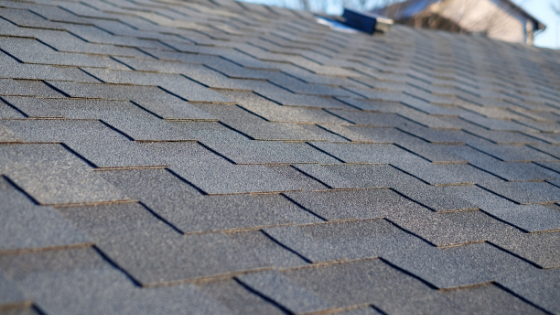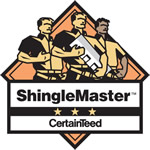How to Maintain Your Roof over the Summer

Every year millions of money are spent on replacement of roofs, either because their lifespan is over or it suffered damage due to a natural calamity. Nonetheless, there are instances where such expenditure can be avoided by proper roof maintenance. These maintenance practices also prolong the lifespan of your roof despite some of the adverse weather conditions. Below, we discuss the basics of roof maintenance:
Check your Shingles Regularly
The first step in roof maintenance does not require any equipment but only good vision and time. You need to check up on your roof as often as possible to ensure you pick out any change that might occur within a day, especially after unusual conditions like strong winds or a storm. You do not need to climb up the roof daily, but standing at a distance can give you a better visual of the roof. A pair of binoculars can be considered for the same.
As you look at any damages, you should pay attention to things like shingles, whether they have cracked, curled, or completely absent. Missing granules can also be identified.
Upon discerning any change, you can fix the small changes yourself or contact a professional roofing contractor for further inspection and repair.
Check for Leaks
Leaks may be due to many factors ranging from poor installation to defects from aging. Always check for water stains in unusual places within the house, such as the ceiling or the wall. Anytime you check up on your roof, remember to inspect the attic and ceiling too, taking note of the following: damp smell within specific the rooms, exterior wall spots, water stains either on the ceiling or wall. Bulging patches on the inside walls might be an indicator that water is finding its wall into the wall, and leaks are the most frequent cause.
If any of the mentioned signs are positive, the next task would be to locate the leak. Depending on the site and size of the hole, you can patch it up on your own or immediately contact a roof specialist for a quick fix. Any delay in correcting the mess can complicate the situation leading to total roof replacement or weaken the walls.
Roof Washing
Though it seems like one of the most mundane things to do, washing your roof has a good outcome for its lifespan. Algae can begin growing on your roof, giving it a dirty look with streaks of regions. At first, everything will look perfect but slowly starts to rot depending on the roofing materials used, especially shingles.
The most effective ways of preventing or getting rid of these plants are washing using a 50% mix of water and bleach and installing copper strips at the roof peak. Copper quickly kills the fungi, and when it rains, the pieces placed at the top get spread across the whole roof, attacking any present algae.
Trim Overhanging Tree Branches
Trees act as windbreaks that may be crucial for some types of roofs. However, their proximity to the house must be keenly evaluated. Trees have the risk of falling over the roof or the whole house, causing extensive damages. Again, leaves falling and accumulating over the roof promotes rotting of some structures.
Prevention of such issues, therefore, requires you to cut any branches hanging over the roof or even cut down the tree.
Remove Debris from your Gutters
Gutter cleaning may be regarded as a dirty job, but healthy gutters are paramount for the maintenance of your roof. When they get clogged, water can seep under the roofing system cause damages similar or worse than leaks. Professionals recommend that gutter cleaning should be done semi-annually, i.e., during spring and winter. This practice must be undertaken for complete roofing maintenance.
You can choose to do it yourself or hire a cleaner for a thorough job.
Chimney Inspection
Chimney forms an integral part of the roof that must not be ignored during a maintenance exercise. A small defect such as a crack can increase without early intervention to cause the collapse of the chimney itself and consequent destruction of the other roof components.
There are problems that you can fix on your own such as patching up mortar cracks while others require an expert to handle.
Get a Professional Roof Inspection
Some people may think it’s of no need to look for a professional roofer until a major problem develops. This is in regard to the cost one incurs to get a complete roof inspection done. In contrast, the cost of roof replacement that might be a result of failure to conduct a thorough examination would be much higher. Even though you can use the routine maintenance checklist to do roof inspection yourself, hiring an experienced contractor is more beneficial as they can identify potential problems early enough and recommend necessary action.
Maintaining a good working relationship with the contractor who installed your roof can reduce the cost as the likelihood of getting a discount are high. After installation, it is recommended to carry out a professional inspection at an interval of 2 years. But still, you can get it done annually, which is much better.
Maintenance exercises serve to prolong your roof’s lifespan; however, roof replacement may be inevitable. In the event you or your contractor discovers massive problems that may not be well corrected by repair, full roof replacement is an option. This should not be considered the contractor’s way to milk money out of you but an early intervention. Delays may cause further complications as the roof protects other parts of the house.
Conclusion
Let your roof stay in the optimal state and prolong its lifespan by conducting these maintenance practices, which are pretty simple. A good roof is a good house, so maintain yours!

In Awe Roofing Limited is an Award-Winning, family owned and operated Vancouver Roofing Contractor with over 17 years of roofing experience. We serve the entire Lower Mainland area, from Whistler to Chilliwack, employing a team of professional staff members. Our team has won numerous awards including Best of Homestars for the last five years, and Three Best Rated six years in a row. Learn more






















